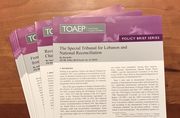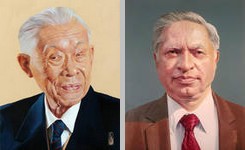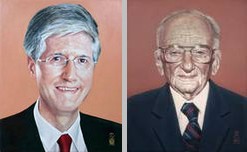Table of contents:
P.25. Evidence that the perpetrator knew about the existence of a conflict.
P.26. Evidence that the perpetrator knew about the existence of an attack on civilians.
P.26.1. Evidence that the perpetrator knew the nature and intention behind the attacks.
P.26.2. Evidence that the perpetrator participated in the attacks.
P.27. Evidence that the perpetrator knew about the existence of systematic rapes.
P.27.1. Evidence that the perpetrator knew the nature and intention behind the systematic rapes.
P.27.2. Evidence that the perpetrator ordered the rapes.
P.27.3. Evidence that the perpetrator participated to the rapes.
P.28. Evidence that the perpetrator knew about the regular violence used against detainees.
P.28.1. Evidence that the perpetrator knew about the systematic abuse of detainees.
P.28.2. Evidence that the perpetrator had recourse to sexual torture to obtain information.
P.28.3. Evidence that the perpetrator created an atmosphere of fear in the prison camp.
P.29. Evidence that the perpetrator knew about the victims lack of consent.
Element:
According to Eve La Haye: "For element [4], the drafters have explicitly provided for a mental element. This element can be seen as either a clarification or a lowering of the requirement of article 30. As for a number of other crimes referring to an element of gravity, debates were split between those delegations that did not want any knowledge requirement for this element and others who believed that article 30 should apply. The compromise reached is included in element [5] and requires "the perpetrator to be aware of the factual circumstances that established the gravity of the conduct." [ ] The awareness of the factual circumstances establishing the gravity of the conduct seems therefore to require only that the perpetrator be aware of the facts that surround the conduct and establish the seriousness of his or her conduct.148 (in R.S. Lee, The International Criminal Court. Elements of Crimes and Rules of Procedure and Evidence, p. 199).
"148For elements involving value judgments such as "inhumane" or "severe," paragraph 4 was inserted in the General Introduction to the Elements of Crimes according to which "it is not necessary that the accused personally completed a particular value judgment, unless otherwise indicated."
P.25. Evidence that the perpetrator knew about the existence of a conflict.
A. Legal source/authority and evidence:
"569.The Trial Chamber also notes that the three accused, in their capacity as soldiers, took an active part in carrying out military tasks during the conflict, fighting on behalf of one of the parties to the armed conflict1367 namely the Serb side and that they therefore knew that an armed conflict was taking place. The evidence also shows that none of their victims took any part in the hostilities."
"1367 See par 407 where the Trial Chamber referred to the possible requirement under common Article 3 that the perpetrator may have to have some relationship to one of the parties to the conflict."
P.26. Evidence that the perpetrator knew about the existence of an attack on civilians.
P.26.1. Evidence that the perpetrator knew the nature and intention behind the attacks.
P.26.2. Evidence that the perpetrator participated in the attacks.
A. Legal source/authority and evidence:
Prosecutor v. Dragoljub Kunarac et al., Cases No. IT-96-23-T and IT-96-23/1-T, Judgement (TC), 22 February 2001, paras. 581-582, 586, 588, 592:
[B. Evidentiary comment:]
P.27. Evidence that the perpetrator knew about the existence of systematic rapes.
P.27.1. Evidence that the perpetrator knew the nature and intention behind the systematic rapes.
P.27.2. Evidence that the perpetrator ordered the rapes.
P.27.3. Evidence that the perpetrator participated to the rapes.
A. Legal source/authority and evidence:
[B. Evidentiary comment:]
P.28. Evidence that the perpetrator knew about the regular violence used against detainees.
P.28.1. Evidence that the perpetrator knew about the systematic abuse of detainees.
A. Legal source/authority and evidence:
[B. Evidentiary comment:]
P.28.2. Evidence that the perpetrator had recourse to sexual torture to obtain information.
P.28.3. Evidence that the perpetrator created an atmosphere of fear in the prison camp.
Prosecutor v. Zejnil Delalić et al., Case No. IT-96-21-T, Judgement (TC), 16 November 1998, para. 941:
[B. Evidentiary comment:]
P.29. Evidence that the perpetrator knew about the victims lack of consent.
P.29.1. Evidence of knowledge of the victim being underage.
A. Legal source/authority and evidence:
[B. Evidentiary comment:]







